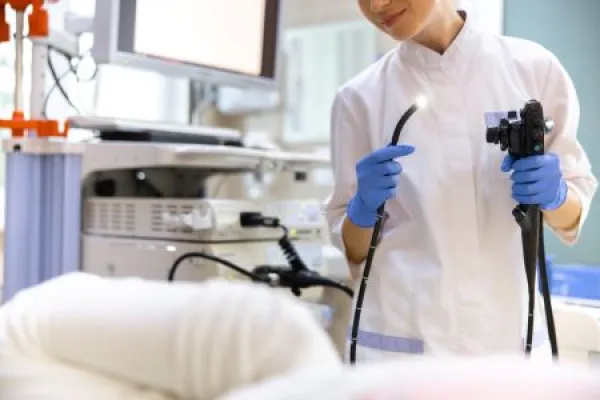Employ Tried-and-True Methods to Convert This Endoscopy Report Into Coder-Speak
Trust your knowledge of anatomy so nothing gets lost in translation. Interpreting and accurately translating intricate details in urology operative reports can be perplexing for coders, and you’re not alone in facing this challenge. If you find yourself scratching your head over detailed urology operative reports, rest assured that many coders, regardless of their experience level, encounter similar difficulties. The key is to simplify the report by breaking it down into smaller, more manageable sections. This way, we can effectively convert the surgeon’s language into coder-friendly terms. Experts recommend this approach as it allows you to translate the report from surgeon-speak to a format that is easier for coders to understand and work with. By dissecting the report into digestible pieces, we can ensure accurate coding and documentation. Try your hand at this example to take your surgical coding to the next level. Know What Services Qualify As Included Prerequisites Part 1: Care was taken to prep in the existing left nephrostomy tube to our sterile field. We then began by accessing the left percutaneous nephrostomy tube and performed an antegrade pyelogram. We advanced a sensor wire into the left kidney. The nephrostomy tube was removed. A Kumpe catheter was utilized to direct the wire down the ureter and into the bladder. Over the wire, a dual lumen was used to advance a second wire into the bladder. One wire was secured as a safety wire, and the other was used as our working wire. Translation: The provider removes an existing nephrostomy tube and proceeds to prepare the site for insertion of a renal endoscope. Preparation involves insertion of a catheter to direct a sensor wire (guidewire) through the ureter and into the bladder. The provider inserts a safety guidewire in order to provide access to the collecting system — or ureter in, the in case of complications. However, some providers may opt to perform this procedure without the use of a safety guidewire. You should consider this portion of the surgery inclusive to the next portion of the procedure involving a renal endoscopy. Understand the Impact of Established Access Points on Coding Fundamentals Part 2: We dilated the nephrostomy tract using rigid dilators starting at 18F up to 24F. We advanced the sheath over this under fluoroscopic guidance. A flexible endoscope was then used to perform systematic nephroscopy of the kidney. No stones were noted in the upper tract. Translation: The surgeon performs a nephrostomy tract dilation to advance the catheter sheath under fluoroscopic guidance. This sheath will be used as an endoscopic access point for the insertion of the cystoscope and ureteroscope to follow in Part 3. The surgeon then inserts a flexible endoscope via the access sheath to examine the kidney and surrounding renal pelvis. Code a nephroscopy, also known as a kidney endoscopy (per the CPT® index), using 50551 (Renal endoscopy through established nephrostomy or pyelostomy, with or without irrigation, instillation, or ureteropyelography, exclusive of radiologic service). Within the CPT® index, stoma presents you with a selection of numerous renal endoscopy codes. However, since no stones were identified, report the code indicating a diagnostic service, 50551. Note: Even though the code description indicates that it’s exclusive of radiologic service, you should not report 76000 (Fluoroscopy (separate procedure), up to 1 hour physician or other qualified health care professional time) separately. National Correct Coding Initiative (NCCI) edits reveal a modifier “1” indicator on the column 2 code (76000) when paired with 50551. CMS/NCCI guidelines instruct you to include 76000 as an integral component of all endoscopic procedures when performed. Therefore, you should not report 76000 separately with an endoscopic procedure. Stephanie Stinchcomb Storck, CPC, CPMA, CUC, CCS-P, ACS-UR, longtime urology coder and consultant in Summerfield, Florida, adds, “It’s very important to understand the nuances of radiologic services when performing urologic procedures. Knowing that Medicare employs the NCCI edits can save many denied claims. Make sure NCCI is checked for all radiologic services when performed.” Don’t Confuse the Absence of NCCI Bundling Edits As Approval Part 3: A flexible ureteroscope was inserted via the access sheath into the ureter, which was followed until we identified two stones. One was removed with a Zero Tip™ basket. The second was too large, so a holmium laser fiber was obtained. The 200-micron holmium laser fiber was introduced and used to fragment the stone into multiple pieces. We then changed back to the flexible cystoscope and repeated evaluation of the upper tract. No stones were seen. An antegrade pyelogram was obtained through the scope to ensure all areas were evaluated, again with no stone seen. Translation: The surgeon retracts the cystoscope and inserts a ureteroscope for visualization of the ureter. According to manufacturer Boston Scientific, the Zero Tip™ Nitinol Stone Retrieval Basket is a “versatile tipless nitinol basket designed for use in the kidney and ureter.” The basket can be used for smaller stone fragments; however, the surgeon has to resort to laser vaporization for the larger stone. Following fragmentation of the stone using a holmium laser, the surgeon removes the ureteroscope and reinserts the cystoscope for evaluation of the upper urinary tract. The surgeon then injects a contrast dye into the cystoscope to illuminate the urinary tract. This injection, coupled with subsequent X-ray imaging that ensures all urinary calculi have been accounted for, is known as an anterograde pyelogram. Report the entirety of this portion of the procedure with 50961 (Ureteral endoscopy through established ureterostomy, with or without irrigation, instillation, or ureteropyelography, exclusive of radiologic service; with removal of foreign body or calculus). The code description includes ureteropyleography, meaning you should not report the anterograde pyelogram separately. Take note: Since there are no National Correct Coding Initiative (NCCI) bundling edits to prevent reporting of 50961 with 50430, you might consider 50430 (Injection procedure for antegrade nephrostogram and/or ureterogram, complete diagnostic procedure including imaging guidance (eg, ultrasound and fluoroscopy) and all associated radiological supervision and interpretation; new access) as an included component of 50961 and not separately billable. “There are parts of the procedure that are inherent such as the injection procedure for the nephrostogram. Descriptor for 50961 states ‘with or without ureteropyelography’ so if it is performed during the same session, do not report the radiologic procedure separately,” says Storck. Lindsey Bush, BA, MA, CPC, Development Editor, AAPC


